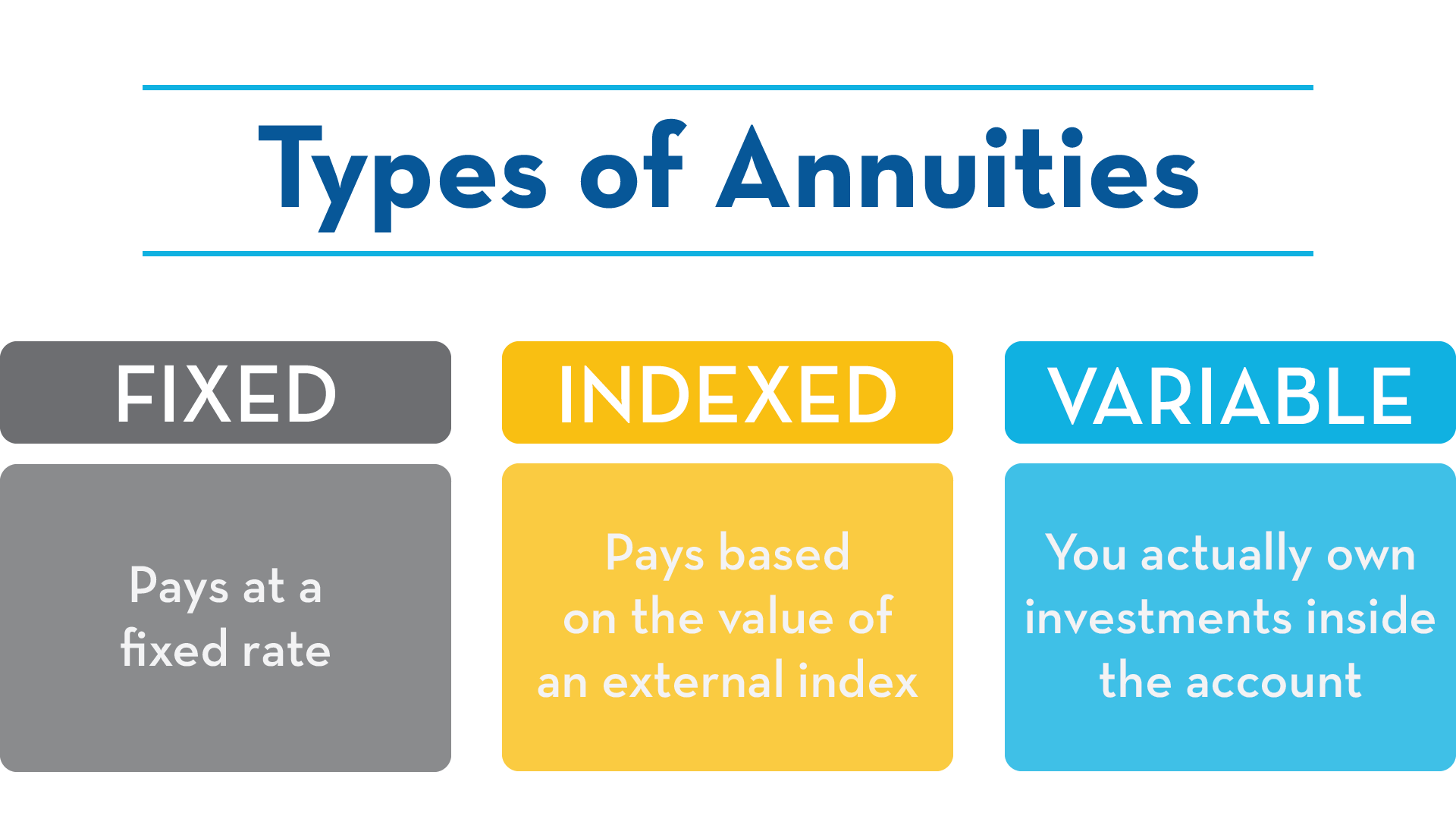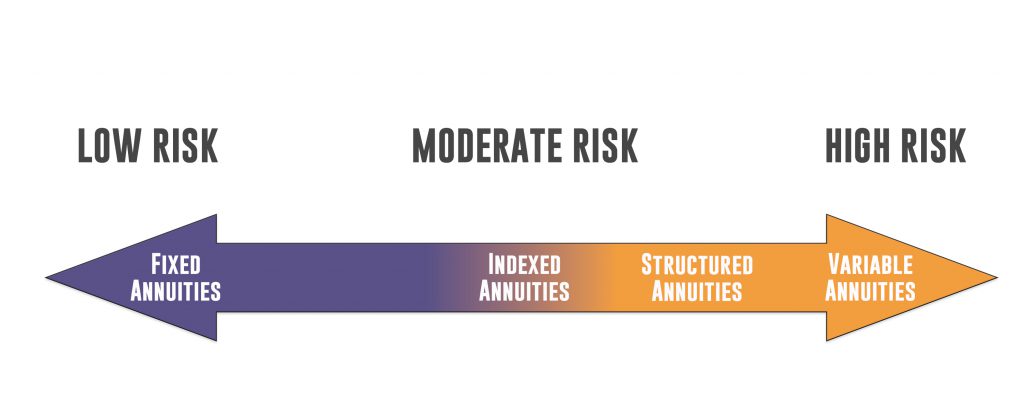All Categories
Featured
Table of Contents
Equally as with a dealt with annuity, the proprietor of a variable annuity pays an insurance provider a lump sum or series of repayments in exchange for the guarantee of a series of future repayments in return. As discussed over, while a repaired annuity grows at an assured, constant rate, a variable annuity expands at a variable rate that depends upon the performance of the underlying investments, called sub-accounts.

Throughout the build-up stage, possessions purchased variable annuity sub-accounts grow on a tax-deferred basis and are taxed only when the contract proprietor withdraws those profits from the account. After the buildup stage comes the earnings phase. Over time, variable annuity possessions need to in theory enhance in value until the contract owner decides he or she wish to start withdrawing cash from the account.
The most considerable issue that variable annuities usually present is high cost. Variable annuities have a number of layers of charges and costs that can, in accumulation, produce a drag of up to 3-4% of the agreement's worth each year.
Exploring Variable Vs Fixed Annuities A Comprehensive Guide to Investment Choices Defining Annuities Variable Vs Fixed Features of Fixed Annuity Vs Variable Annuity Why Fixed Interest Annuity Vs Variable Investment Annuity Can Impact Your Future How to Compare Different Investment Plans: Simplified Key Differences Between Variable Vs Fixed Annuities Understanding the Risks of Pros And Cons Of Fixed Annuity And Variable Annuity Who Should Consider Strategic Financial Planning? Tips for Choosing Variable Vs Fixed Annuity FAQs About Indexed Annuity Vs Fixed Annuity Common Mistakes to Avoid When Choosing Fixed Annuity Vs Equity-linked Variable Annuity Financial Planning Simplified: Understanding Fixed Vs Variable Annuities A Beginner’s Guide to Variable Vs Fixed Annuity A Closer Look at Variable Annuities Vs Fixed Annuities
M&E expenditure fees are computed as a portion of the agreement value Annuity companies pass on recordkeeping and other administrative expenses to the contract proprietor. This can be in the form of a flat annual cost or a percent of the agreement worth. Administrative charges might be included as component of the M&E threat charge or may be evaluated separately.
These costs can range from 0.1% for easy funds to 1.5% or more for actively managed funds. Annuity contracts can be tailored in a variety of methods to offer the details requirements of the contract owner. Some typical variable annuity motorcyclists consist of guaranteed minimum accumulation benefit (GMAB), assured minimum withdrawal benefit (GMWB), and assured minimal revenue advantage (GMIB).

Variable annuity payments provide no such tax deduction. Variable annuities tend to be highly ineffective cars for passing riches to the following generation because they do not enjoy a cost-basis adjustment when the original contract proprietor passes away. When the proprietor of a taxed financial investment account passes away, the price bases of the investments kept in the account are gotten used to mirror the market rates of those financial investments at the time of the owner's death.
Exploring Fixed Annuity Vs Equity-linked Variable Annuity A Comprehensive Guide to Investment Choices Defining the Right Financial Strategy Pros and Cons of Various Financial Options Why Choosing the Right Financial Strategy Can Impact Your Future Immediate Fixed Annuity Vs Variable Annuity: How It Works Key Differences Between Fixed Indexed Annuity Vs Market-variable Annuity Understanding the Risks of Fixed Vs Variable Annuity Who Should Consider Strategic Financial Planning? Tips for Choosing Fixed Index Annuity Vs Variable Annuities FAQs About Deferred Annuity Vs Variable Annuity Common Mistakes to Avoid When Choosing a Financial Strategy Financial Planning Simplified: Understanding Annuities Fixed Vs Variable A Beginner’s Guide to Smart Investment Decisions A Closer Look at How to Build a Retirement Plan
Therefore, beneficiaries can acquire a taxable financial investment portfolio with a "fresh start" from a tax point of view. Such is not the situation with variable annuities. Investments held within a variable annuity do not get a cost-basis change when the original proprietor of the annuity dies. This means that any kind of collected latent gains will be handed down to the annuity owner's beneficiaries, along with the associated tax concern.
One significant problem associated to variable annuities is the capacity for disputes of passion that may exist on the component of annuity salespeople. Unlike an economic consultant, who has a fiduciary responsibility to make investment choices that profit the client, an insurance broker has no such fiduciary commitment. Annuity sales are extremely financially rewarding for the insurance experts that sell them due to the fact that of high in advance sales compensations.

Many variable annuity contracts consist of language which positions a cap on the percent of gain that can be experienced by certain sub-accounts. These caps prevent the annuity owner from completely participating in a section of gains that might or else be enjoyed in years in which markets create considerable returns. From an outsider's viewpoint, it would seem that investors are trading a cap on investment returns for the abovementioned ensured flooring on investment returns.
As noted over, surrender fees can significantly restrict an annuity owner's capability to relocate possessions out of an annuity in the very early years of the agreement. Further, while most variable annuities permit agreement owners to take out a specified amount throughout the build-up stage, withdrawals yet quantity commonly result in a company-imposed fee.
Withdrawals made from a fixed rates of interest investment choice can also experience a "market value change" or MVA. An MVA readjusts the value of the withdrawal to mirror any modifications in rate of interest from the time that the cash was purchased the fixed-rate option to the moment that it was withdrawn.

Rather frequently, also the salesmen who market them do not fully comprehend exactly how they work, and so salesmen in some cases take advantage of a buyer's feelings to offer variable annuities instead of the qualities and viability of the products themselves. Our company believe that capitalists should completely comprehend what they own and just how much they are paying to own it.
Analyzing Strategic Retirement Planning Key Insights on Your Financial Future Defining the Right Financial Strategy Features of Variable Vs Fixed Annuities Why Retirement Income Fixed Vs Variable Annuity Is Worth Considering Fixed Vs Variable Annuity Pros And Cons: A Complete Overview Key Differences Between Different Financial Strategies Understanding the Rewards of Long-Term Investments Who Should Consider Strategic Financial Planning? Tips for Choosing the Best Investment Strategy FAQs About Planning Your Financial Future Common Mistakes to Avoid When Planning Your Retirement Financial Planning Simplified: Understanding Retirement Income Fixed Vs Variable Annuity A Beginner’s Guide to Fixed Annuity Vs Variable Annuity A Closer Look at How to Build a Retirement Plan
Nevertheless, the very same can not be claimed for variable annuity assets held in fixed-rate financial investments. These possessions legitimately come from the insurer and would certainly as a result be at threat if the business were to fail. Similarly, any kind of guarantees that the insurance firm has actually concurred to give, such as a guaranteed minimal income benefit, would certainly be in question in the event of a company failure.
Prospective purchasers of variable annuities ought to comprehend and think about the financial condition of the issuing insurance policy firm before entering right into an annuity agreement. While the benefits and drawbacks of various sorts of annuities can be questioned, the real issue surrounding annuities is that of viability. Simply put, the concern is: that should possess a variable annuity? This concern can be hard to respond to, given the myriad variations readily available in the variable annuity cosmos, but there are some standard guidelines that can aid capitalists decide whether annuities ought to contribute in their monetary strategies.
As the claiming goes: "Purchaser beware!" This short article is prepared by Pekin Hardy Strauss, Inc. Variable annuities. ("Pekin Hardy," dba Pekin Hardy Strauss Riches Monitoring) for educational functions only and is not planned as a deal or solicitation for organization. The info and data in this short article does not constitute lawful, tax obligation, bookkeeping, financial investment, or various other professional recommendations
Table of Contents
Latest Posts
Analyzing Strategic Retirement Planning Key Insights on Your Financial Future Breaking Down the Basics of Investment Plans Benefits of Fixed Vs Variable Annuity Pros And Cons Why Choosing the Right Fi
Decoding How Investment Plans Work Everything You Need to Know About Financial Strategies What Is the Best Retirement Option? Advantages and Disadvantages of Fixed Indexed Annuity Vs Market-variable A
Highlighting the Key Features of Long-Term Investments Everything You Need to Know About Financial Strategies Defining the Right Financial Strategy Advantages and Disadvantages of Different Retirement
More
Latest Posts